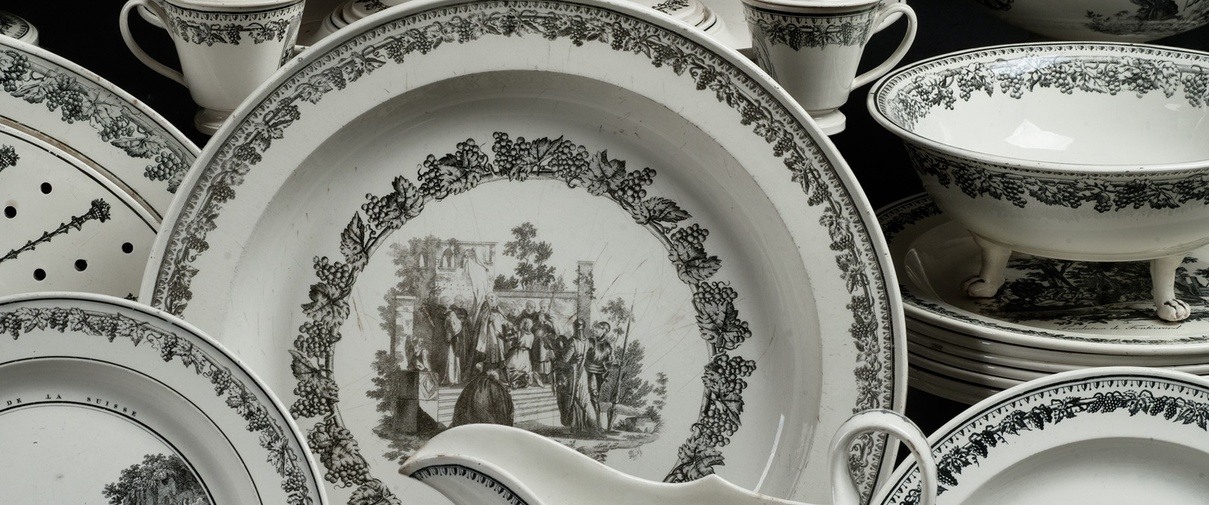Creil service
Dining à la Francaise
The Princessehof regularly receives gifts from private individuals. This is often a single object, but sometimes a complete collection. We cannot always accept the gifts we are offered, either because they don’t fit our collection profile or because we already have similar objects at our disposal. However, this French dinner service from the early nineteenth century filled an important hiatus in the collection. Moreover, this service is not only interesting from an art-historical point of view, but it also tells a personal story. So we accepted it with open arms!
What makes this service so special is that it had remained in the same family for almost 200 years and also that so many of its individual components have survived (almost 300!). It was once bought by Gerrit Vermeulen, who was born in 1798 as the son of a successful hay merchant in Waspik. Gerrit followed in his father’s footsteps at an early age and was equally astute at business. When Belgium’s struggle for independence erupted in 1830, the Ministry of War awarded him the lucrative contract to supply the horses’ fodder, reaping him a tidy profit. In 1832 he was able to buy the Eethen and Meeuwen estate in the Land of Heusden and Altena for more than 30,000 guilders. He, his wife and his children moved into the centuries-old castle surrounded by vast farmlands. But Gerrit couldn’t cope with the good life, becoming so corpulent that he had to have his own carriages parked in places where he conducted business, because he could no longer pass through an ordinary doorway. His mental state had also declined. He died in 1840, at the age of 41. His wife, Catharina Johanna van Heusden, daughter of a minister in Hilvarenbeek, survived him by more than 50 years.
Gerrit and Catharina were married in March 1817: he was 18, she 21. Was the groom already so wealthy at that time that he could buy such an extensive – and expensive – French dinner service? Or was it a wedding present from his affluent parents? We will never know, but it is clear that the service dates from the same period as Gerrit and Catharina’s wedding. Two factory marks on the bases of the objects confirm this. The first is from the Manufacture de Creil, located north of Paris, where the service was produced. The second is from the company Stone, Coquerel & Legros d’Anizy, which was responsible for the printed black decorations. These companies worked together from 1808 to 1818.
